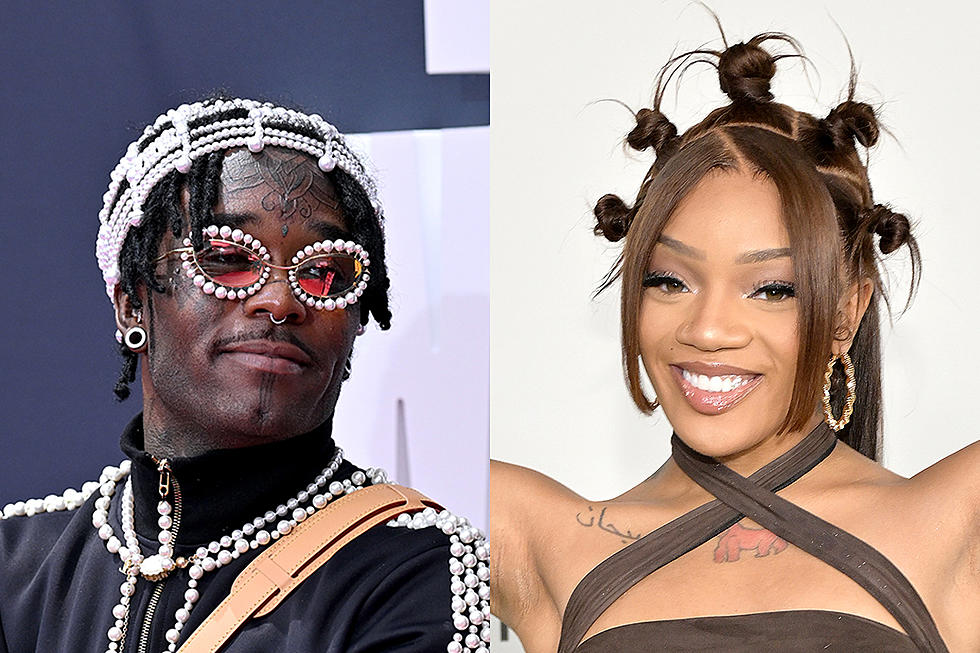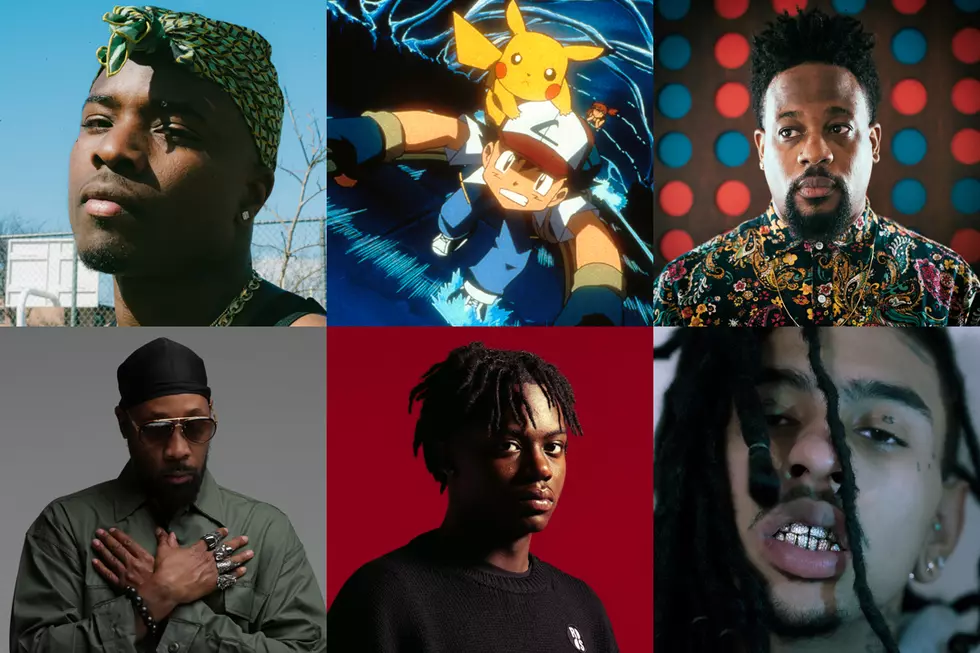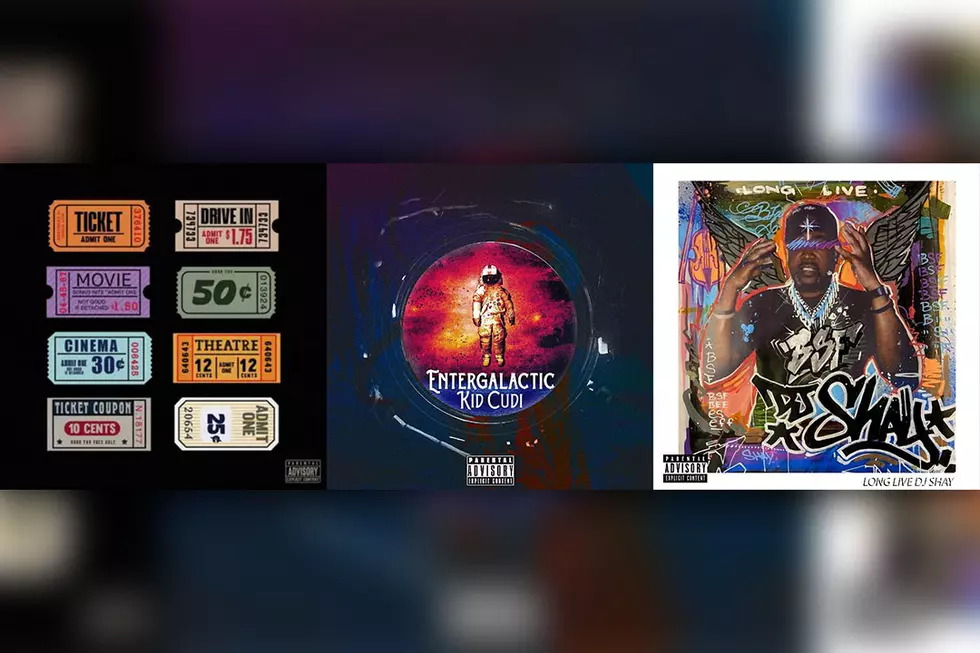
How High-Pitched Voices Found Their Way Into Hip-Hop
A rapper’s voice is just as important as the content of their music. When you think about the greatest rappers of all time, you can instantly mimic how they sound. While some voices are deep, raspy and rigid, like the DMX’s and Biggie’s of the world, the high-pitched voice in hip-hop has taken prominence over the years with the likes of Danny Brown, Young Thug, Swae Lee, 645AR and Playboi Carti. Listeners now have grown to gravitate towards higher frequencies, also deemed as the squeaky voice and baby voice, and in the year 2020, that approach has become a pivotal sound of rap.
Higher pitches are very much attached to rap’s origins. That’s the case with the fallen legend and Compton rapper Eazy-E, who stepped on the scene in 1986. Eazy would soon become known for having one of the most significant voices in rap history, one that was everything but low in pitch. When H.B.O.—short for Home Boys Only—the group that he started off managing, said that they wanted no parts in Ice Cube’s ghostwritten song “Boyz-n-the-Hood,” Dr. Dre convinced Eazy to record it because of the shrill in his voice.
Right out the gate, as the world witnessed in 1987, “Boyz-in-the-Hood” became a surefire hit. This wasn’t the first time in rap where the hood story of crime, crack and corruption was told, but it was one of the first instances in which a piercing, higher-pitched voice was praised rather than laughed at. People naturally gravitated toward something different, as the story usually goes with rap. Eazy’s voice was natural and truly one of a kind. However, a decade later, rappers would start playing with distortion and the sound of rap would evolve once again. This time, on a production tip.
As time went on, studio equipment was enhanced and artists were able to push more sound boundaries. There was no one in the studio who knew more about those advancements and how to work with them than the producers and the engineers, similarly to how acute voices are tweaked today. In the early 1990s, hip-hop producer Madlib worked with two groups: Tha Alkaholiks and Lootpack. He had plenty of beat ammo to show off his skill, but the one bullet that would unexpectedly strike its target came when he rapped over his own production under the alias Quasimoto.
Madlib didn’t like the sound of his voice because it was too deep. So Madlib flipped technology into something refreshing by slowing down his recording, rapping slow and then speeding the record back up. This is where Quasimoto’s nasally sound was birthed as the alter ego Lord Quas. The voice of Madlib’s alter ego became an early example of a computerized, helium re-do. He would soon drop his debut album, The Unseen, in 2000, under the doppelgänger. Upon its release, fans fell in love with the infectious modulation, but the technological tweaking would grow even bigger in the coming years.
Other producers started flirting around with distortion in the 1990s, using a strategy similar to Madlib’s to create beats that were modified with high pitches. Wu-Tang Clan’s RZA did that with ease on a song called “For Heaven's Sake” featuring Cappadonna in 1997. The song flips King Floyd’s “Don’t Leave Me Lonely,” but in the same tone that Alvin and the Chipmunks speak in. A year later in 1998, a younger Jay-Z would benefit from this when he dropped "Hard Knock Life (Ghetto Anthem),” the platinum single on his third studio album, Vol. 2... Hard Knock Life. The song, produced by The 45 King, sampled a piping high flip of "It's the Hard Knock Life" from the musical Annie.
Alongside Hov in the height of the Roc-A-Fella Records era was Chicago producer Kanye West, who would take the same recipe and take chipmunk-sounding samples to a new level. Kanye West used sped-up, squeaky samples as a cheat code in hip-hop. After working closely with Jay-Z and producing a certified hit with the 2001 song "Izzo (H.O.V.A.),” ’Ye became more vocal about wanting to be a rapper. Still, his production skills would outshine his lyrics. The fact that Yeezy's 2003 banger “Through the Wire” was recorded when Kanye’s mouth was wired shut is captivating in its own right, but even that fell second place to the attention created from the beat, which flipped Chaka Khan’s 1984 track “Through the Fire” into a piping cadence.
Kanye would not only become one of the most popular producer-rappers in the game, but he would also be famously credited with giving his beats a cartoony timbre that proved their worth time and time again on Grammy Award-nominated songs like Twista’s 2003 hit “Slow Jamz” featuring Jamie Foxx and Mr. West himself.
In the mid 2010s, the squeaky voice would take the shape of a new mold. This time, the mold was back through the voice of the artists. From the year 2010 and on, there became more sub-genres in rap than ever before, brought to us by a new generation of rappers who went out of their way to bend the boundaries of what already existed. Detroit native Danny Brown shrieked melodically on his second album XXX, released in 2011. On the LP, he frequently bounced between high and lower pitches, which was partly refreshing to some and obnoxious to others. His purpose, as he told Spin in 2012, was to experiment with “how far [he] could push listeners.” The significance in his pitch allowed him to carve out his own lane, one that was driven by the elevated speed and range of his voice that people grew used to hearing on rap beats years prior.
Two years later, an Atlanta artist by the name of Young Thug would start popping off as a result of his eccentric, animated vocals. After signing with Gucci Mane’s 1017 Brick Squad Records in 2013, Thugga Thugga would become a household name in his city after dropping “Stoner” and “Danny Glover.” Like Danny Brown, Thug had a niche audience at the time, but he would soon bring high-pitched rap into the mainstream when he was featured on T.I.'s 2014 song "About the Money."
Thugga’s treble was turned all the way up on his infectious verse. Then when he linked up with Rich Homie Quan and dropped “Lifestyle,” under the group name Rich Gang, two days after "About the Money" arrived in 2014, Thug became two for two with the introduction of his peerless style. Young Thug became an undeniable gem. He wasn’t the most lyrical, but his overly creative personality resulted in a key, elevated voice that went on to make his Slime Season mixtapes fan favorites.
Functioning in the same circuit at the time was Mississippi duo Rae Sremmurd, who clearly mastered the art of making hits. Swae Lee and Slim Jxmmi's songs were thunderous partly because of the entrancing beats created by Mike WiLL Made-It, but mostly because of their two-for-one style, which allowed Swae Lee to rap and sing with a blaring high tone and Slim Jxmmi to navigate on the rougher, deeper side of things.
In 2014, Rae Sremmurd dropped their two-times platinum-selling debut single “No Flex Zone,” proving that rap fans accepted the mixed sounds. The following year, they would release their debut album, SremmLife, filled with hits like the re-released Nicki Minaj-assisted “Throw Sum Mo” and the banger “No Type.” Although the duo shined as a unit, Swae Lee’s recurring use of high-pitched singing and rapping made these party anthems sound like no other. Swae would eventually cash in on his popularity as an artist with a high pitch, showing up as a featured guest solo on hits like French Montana's 2017 track "Unforgettable" and 2015's “Drinks On Us” with Mike Will Made-It, Future and The Weeknd,
Shortly after, a young Atlanta-born, New York-based artist named Playboi Carti would soon hone in on that sound and create a sub-genre of his own. Carti’s 2015 singles “Broke Boi” and “Fetti” were already picking up steam, but Carti's experimental use of the slurred, baby voice can be first traced back to A$AP Mob’s “Telephone Calls” in 2016. That same year, he signed to the Mob’s AWGE imprint under Interscope Records. His former A&R, Aaron "Dash" Sherrod, says that Carti’s baby voice is what attracted him to the rapper in the first place.
Carti's baby voice was unheard of at the time, causing kids to flock to Sir Cartier and his sound. Sherrod and Carti had mutual friends, causing them to be in the studio with each other most of the time. Since Cash Carti's raps sounded like an infant, Sherrod had no idea what he was talking about, but once the rapper broke it down for him, Sherrod saw the vision. He then helped Carti sign to his deal at Interscope.
“I understood the beat, and I understood the melody, but his voice?" Sherrod says. "That shit was unheard of. Even how he was saying, ‘What?’. That was super important, probably the most important thing other than the fact that all of the kids like him. He made me a believer. I grew up on Kanye and Wu-Tang, but [Carti's] voice definitely turned me into a fan.”
That’s the case with a good fraction of hip-hop fans, who are still eagerly awaiting Playboi Carti's next album, Whole Lotta Red, to drop in hopes that the baby voice will be all over it. According to Sherrod, Carti’s voice is similar to that of Eazy-E’s—natural with no distortion. Carti has gotten so good at it that he now uses his voice to enhance the beat, too. “Carti will do 100 different sounds," Sherrod shares. "He uses his voice as an instrument. Ninety-nine percent of the time, it’s Carti."
While Carti’s voice is natural, he’s an anomaly in that way. When most artists want to achieve the highest of tones, they lean on their producers and engineers to help make the magic happen through technology. Some rappers, like rising newcomer 645AR, have been able to spark up an entire rap career from implementing a cybernated squeaky voice. Natural voice or not, his name is increasingly making its way into rap conversations in 2020. After going viral in 2019 as a result of songs like “Crack” and “Bible & A K,” the Bronx rapper signed a deal with Columbia Records earlier this year.
The first time 645AR remembers hearing the high-pitched voice was on Rae Sremmurd’s “Swang,” released in 2016. The song inspired 645AR to zero in and figure out he could be a different artist as well; he admired the way Swae Lee sung on the song. 645AR's solution was an alarming, high frequency voice that gets even higher, depending on how emotional he is when he’s rapping. His earliest released song "One Way," dropped in late 2019, and "4 Da Trap," the January track that also helped with his viral factor (the video has over 10 million views on YouTube), both showcase his squeaky sonance.
Like the fans' eyebrow-raising reception of Danny Brown and Young Thug's voices at first, 645AR is aware of the criticism that comes with using it. But he isn’t worried about that and given his success so far, the rapper plans on sticking with it.
“Some people find what I do amazing and some people find what I do terrible," he affirms. "I don’t really pay too much attention to it, but I do like seeing how people respond to it. People find me fresh. People like what I’m doing, and there’s a lot of people supporting it.”
Aside from artists like Playboi Carti and 645AR, other rappers have consistently dabbled with high frequencies. Future’s now infamous bridge on “King’s Dead” became the most quotable part of the song: "La di da di da, slob on me knob/Pass me some syrup, fuck me in the car/La di da di da, muthafuck the law/Chitty chitty bang, murder everything." Lil Keed’s voice on “Nameless” skyrockets and never comes back down. 88 Camino, one half of The Weeknd’s XO signees 88GLAM, has dabbled in and out of the high-pitched sound on songs like “Bali.” And then of course, Roddy Ricch’s debut album, Please Excuse Me for Being Antisocial, is absolutely flooded with pleasant screeching.
Considering the sounds of hip-hop in 2020, and high pitches being present now more than ever, the question of how long will this style last is warranted. Artists treat music like fashion; when everybody else starts wearing it, they want to switch it up. The same can be said for the current wave of high-pitched voices in rap. Once more rappers start riding the wave, will the baby voice no longer exist because the waters are crowded? If it wasn’t for artists wanting to switch things up in the first place, we would’ve never gotten to the present day rap game that’s comfortable with the evolving sound of high frequencies, so who knows what’s next. What rap reflects right now though is that high-pitched voices are stamping their way into hip-hop history. And we’re right in the midst of it happening.
See 30 Prolific Quotes From Your Favorite Rappers
More From HOT 99.1










